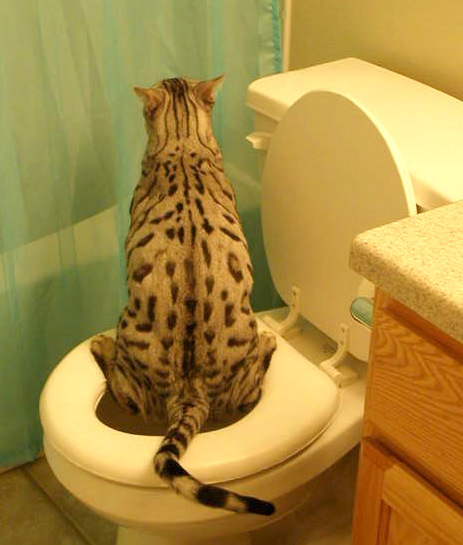The Risks of Flushing Cat Poop in Your Toilet - Preventive Measures
The Risks of Flushing Cat Poop in Your Toilet - Preventive Measures
Blog Article
We have found this post relating to How to Dispose of Cat Poop and Litter Without Plastic Bags directly below on the internet and thought it made good sense to discuss it with you here.

Intro
As pet cat proprietors, it's important to bear in mind exactly how we throw away our feline close friends' waste. While it might appear hassle-free to flush feline poop down the bathroom, this technique can have damaging effects for both the atmosphere and human health and wellness.
Alternatives to Flushing
The good news is, there are much safer and extra liable means to get rid of cat poop. Consider the adhering to options:
1. Scoop and Dispose in Trash
The most usual technique of getting rid of feline poop is to scoop it right into a naturally degradable bag and throw it in the trash. Be sure to make use of a specialized clutter inside story and get rid of the waste immediately.
2. Usage Biodegradable Litter
Choose eco-friendly feline trash made from products such as corn or wheat. These litters are eco-friendly and can be safely disposed of in the trash.
3. Hide in the Yard
If you have a backyard, consider burying cat waste in a designated area far from veggie yards and water resources. Make certain to dig deep enough to prevent contamination of groundwater.
4. Mount a Pet Waste Disposal System
Invest in an animal garbage disposal system especially designed for cat waste. These systems use enzymes to break down the waste, lowering odor and ecological impact.
Wellness Risks
Along with ecological worries, purging cat waste can also present health and wellness risks to humans. Pet cat feces might include Toxoplasma gondii, a bloodsucker that can cause toxoplasmosis-- a potentially extreme health problem, particularly for expectant women and people with weakened immune systems.
Ecological Impact
Purging cat poop introduces harmful pathogens and bloodsuckers right into the supply of water, posturing a considerable danger to marine ecosystems. These contaminants can adversely influence marine life and compromise water high quality.
Final thought
Accountable animal ownership extends past offering food and sanctuary-- it also involves correct waste management. By avoiding purging feline poop down the toilet and opting for alternate disposal techniques, we can lessen our environmental footprint and shield human wellness.
Why Can’t I Flush Cat Poop?
It Spreads a Parasite
Cats are frequently infected with a parasite called toxoplasma gondii. The parasite causes an infection called toxoplasmosis. It is usually harmless to cats. The parasite only uses cat poop as a host for its eggs. Otherwise, the cat’s immune system usually keeps the infection at low enough levels to maintain its own health. But it does not stop the develop of eggs. These eggs are tiny and surprisingly tough. They may survive for a year before they begin to grow. But that’s the problem.
Our wastewater system is not designed to deal with toxoplasmosis eggs. Instead, most eggs will flush from your toilet into sewers and wastewater management plants. After the sewage is treated for many other harmful things in it, it is typically released into local rivers, lakes, or oceans. Here, the toxoplasmosis eggs can find new hosts, including starfish, crabs, otters, and many other wildlife. For many, this is a significant risk to their health. Toxoplasmosis can also end up infecting water sources that are important for agriculture, which means our deer, pigs, and sheep can get infected too.
Is There Risk to Humans?
There can be a risk to human life from flushing cat poop down the toilet. If you do so, the parasites from your cat’s poop can end up in shellfish, game animals, or livestock. If this meat is then served raw or undercooked, the people who eat it can get sick.
In fact, according to the CDC, 40 million people in the United States are infected with toxoplasma gondii. They get it from exposure to infected seafood, or from some kind of cat poop contamination, like drinking from a stream that is contaminated or touching anything that has come into contact with cat poop. That includes just cleaning a cat litter box.
Most people who get infected with these parasites will not develop any symptoms. However, for pregnant women or for those with compromised immune systems, the parasite can cause severe health problems.
How to Handle Cat Poop
The best way to handle cat poop is actually to clean the box more often. The eggs that the parasite sheds will not become active until one to five days after the cat poops. That means that if you clean daily, you’re much less likely to come into direct contact with infectious eggs.
That said, always dispose of cat poop in the garbage and not down the toilet. Wash your hands before and after you clean the litter box, and bring the bag of poop right outside to your garbage bins.
https://trenchlesssolutionsusa.com/why-cant-i-flush-cat-poop/

Hopefully you enjoyed reading our part about Can You Flush Cat Poo or Litter Down the Toilet?. Thanks for taking the time to browse our article post. Do you know about somebody else who is intrigued by the subject? Feel free to share it. We treasure reading our article about Don’t flush cat feces down the toilet.
Request An Appointment Report this page